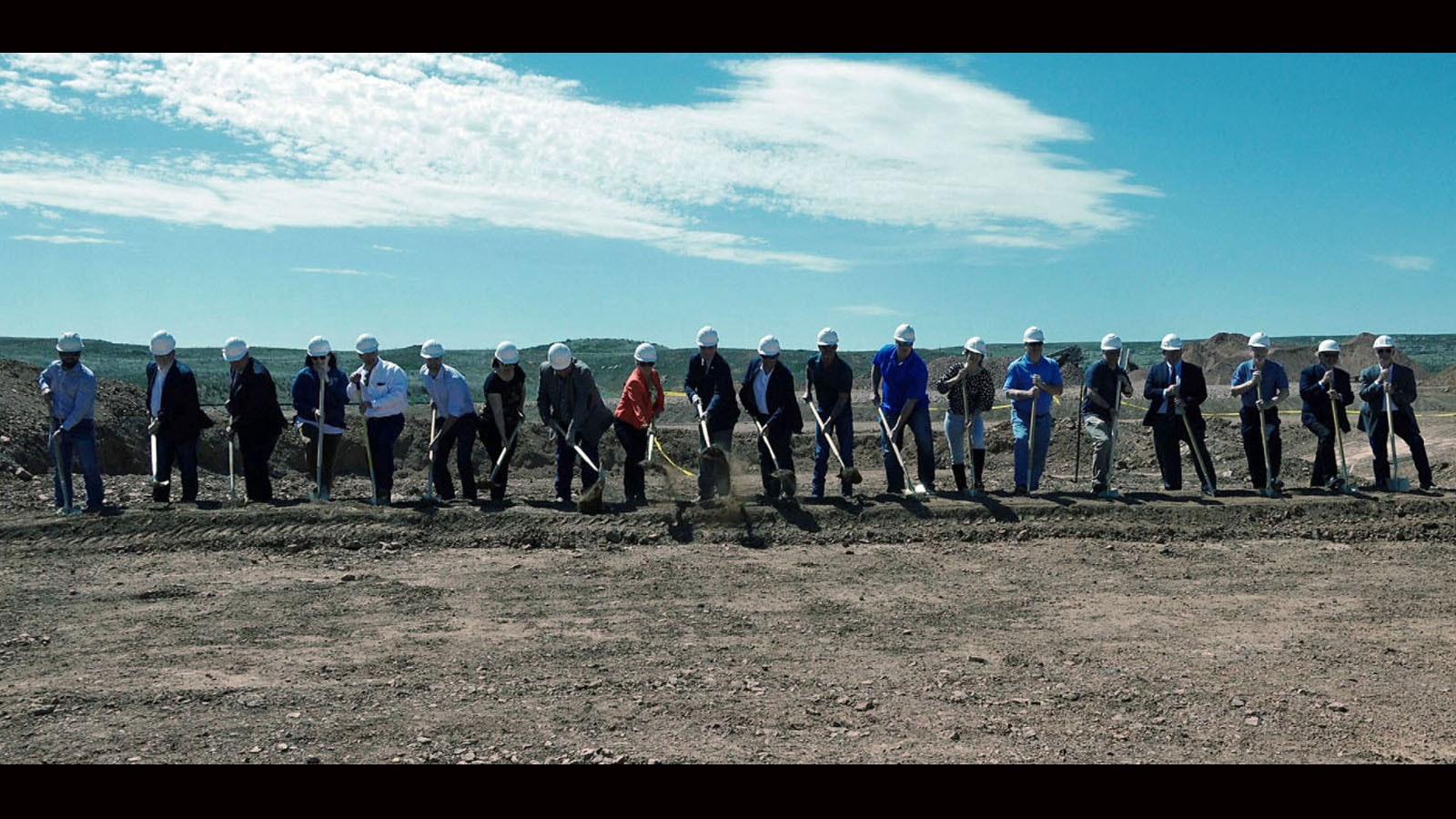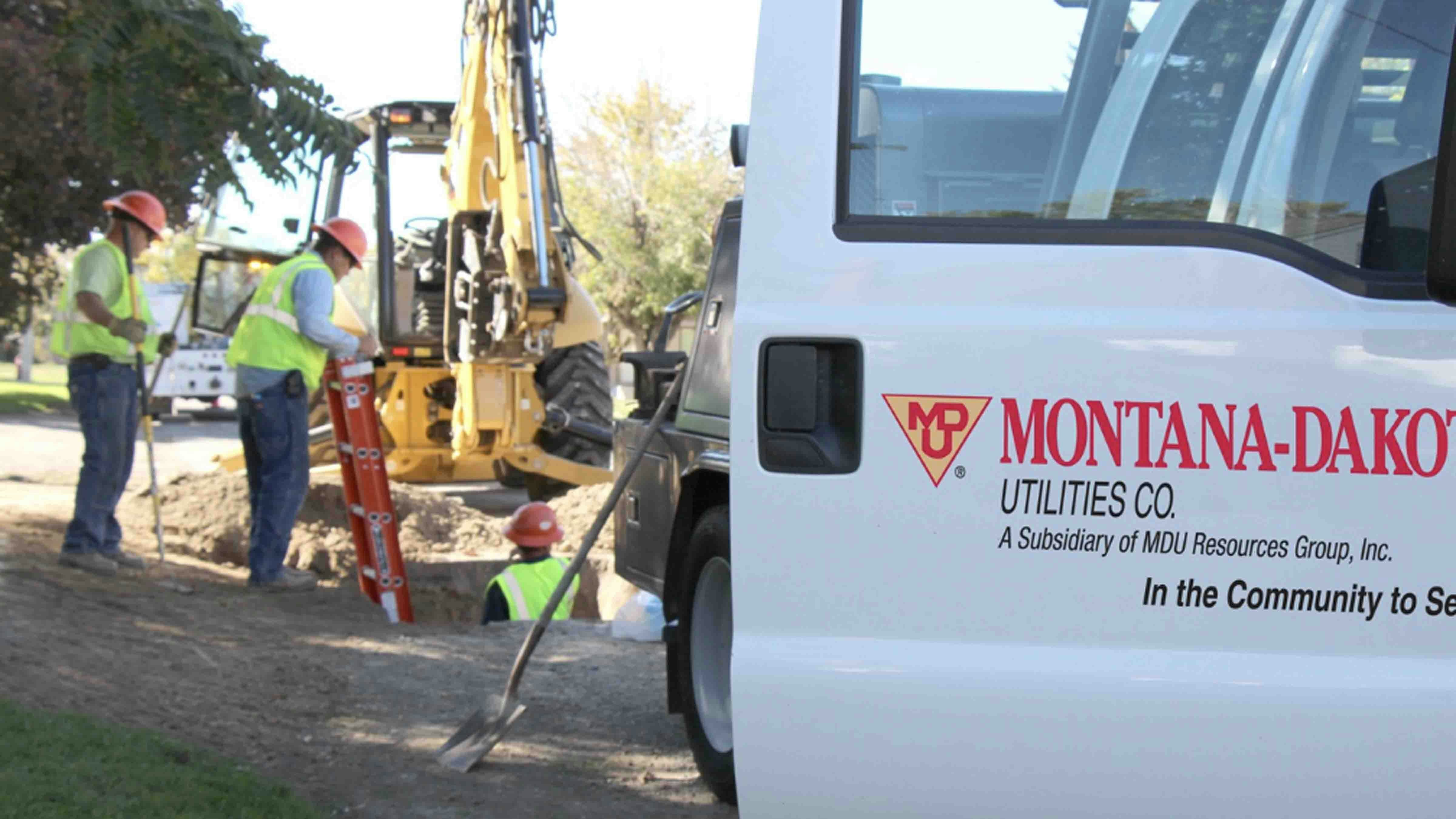By Mark Christensen, County 17
This story republished with permission
On a shale covered site north of Gillette, Energy Capital Economic Development (ECED) broke ground yesterday on what it hopes will be the global center of research for coal-based products.
The Wyoming Innovation Center is a $3.48 million facility focused on the development of high-value, non-fuel, coal-based processes and products, according to materials from ECED. Its ECED, Campbell County, and the City of Gillette’s first major capital investment as part of the “Carbon Valley” ecosystem that many hope will develop new uses for Campbell County’s Powder River Basin (PRB) coal.
Thanks to federal funding from the Economic Development Administration (EDA) and the Wyoming Business Council (WBC), the local funds for the project are minimal (County 17, Jan. 21). The project secured a $1.5 million grant from the WBC (County 17, June 15, 2017) and $1.46 million from the EDA (County 17, Aug. 28, 2019). The balance is being provided by the City of Gillette, Campbell County, and private businesses.
Speaking to the importance of facilities like WyIC, ECED CEO Phil Christopherson took the opportunity to praise former WBC Regional Representative Dave Spencer, who had the initial idea for what would become WyIC. At the time of its conception five years ago, Spencer and Christopherson were meeting with companies who were looking to place pilot plants and prove up their technology.
One of those companies, TerraPower, has received a lot of attention recently as they announced the Natrium Reactor to be built in Wyoming (County 17, June 3). At the time, TerraPower, like many of the companies, indicated that if there was a place that they could setup and build a pilot plant, they would be there.
“That was the genesis for the idea behind the Wyoming Innovation Center. Let’s build a place where that technology can be taken out of the lab and put to practical use, so we can extend the life of our coal mines, find alternate uses for coal, and use that as a raw material for manufacturing plants,” Christopherson said.
Mike Easley, CEO of Powder River Energy Corporation (PRECorp), and a member of the Wyoming Business Council, recognized how unique Campbell County and Wyoming are.
“It would have been so easy many years ago to assume the role of victim, find a persecutor, look for a rescuer and go in that kind of mode, but instead, because of leadership we have had, […] we have assumed the role of a creator and we are making things happen here,” Easley said.
Easley noted the support of power cooperatives like PRECorp, Basin Electric Power Cooperative (who supplies power to PRECorp), and Tri-State in innovation and their contributions towards projects like the Wyoming Integrated Test Center (ITC) (County 17, May 17, 2018).
Through the concept of the Carbon Valley, Easley believes Campbell County and the state can push back against the forces fighting coal.
Wyoming Governor Mark Gordon was pleased to see the project come to fruition and reminisced about past conversations looking to develop partnerships for new technology and new products based upon Wyoming’s abundant coal resources. Gordon noted it had been nearly a decade since those initial conversations.
At the time, Gordon saw an opportunity “Where we could develop the kind of carbon fiber technology that could eventually mean we would be manufacturing componentry for Boeing planes. Instead of fighting with Washington, maybe we would be working together to really move our country forward.”
After those conversations, Gordon sat down with sovereign wealth funds and asked, “How are we going to invest in our future? How are we going to make sure that not only our country goes forward, but that our world goes forward and understands there are opportunities for technology?” Gordon’s questions were in the context of coal and fossil fuels.
More Atlas Carbons
The goal of WyIC is more Atlas Carbons. Atlas Carbon takes PRB coal and converts it to activated carbon, a significantly higher value product with a growing market.
With requests for state money, Gordon said, “Normally people show up and say, ‘You need to give us all this money and we’ll promise you a great project.’ But instead, Atlas, and Jim Ford, said ‘Here’s what we’ve done. We cowboyed some engineering together. We bought some used equipment. We made it work. That’s what us ranchers know how to do. And it’s working and its coming to fruition and its growing.”
Atlas Carbon, who’s site is just north of WyIC, is now producing a valuable product using PRB coal, and though they did receive state funding to scale up their operations, they made it work first and proved up their technology. The work at WyIC is all about proving-up technology.
“It’s time. It’s time that America starts selling energy and technology and the future to our friends instead of trying to buy it from our enemies,” Gordon said, while noting that most rare earth elements come from China and uranium is often sourced from Russia.
Though yesterday’s announcement was about developing new uses for PRB coal, Gordon drew attention to the importance of coal and base-load power as the nation focuses on decarbonizing, noting that renewables aren’t the only answer for energy in a carbon-neutral world. Citing rolling blackouts in California, the recent generation issues in Texas, and the need for power from coal during national emergencies like Hurricane Katrina, Gordon said there is still a place for coal.
“[Coal] is our most abundant and readily available energy source, but we can use it for so much more – and that’s what the innovation center is about and the research we are doing here, […] that the City of Gillette will benefit from, and the international recognition that you are getting here is just extraordinary,” Gordon said.
“Gillette is the center of where innovation is going to come from that will lead this nation forward. Make us energy independent and truly drive us into a great new world,” the governor added.





